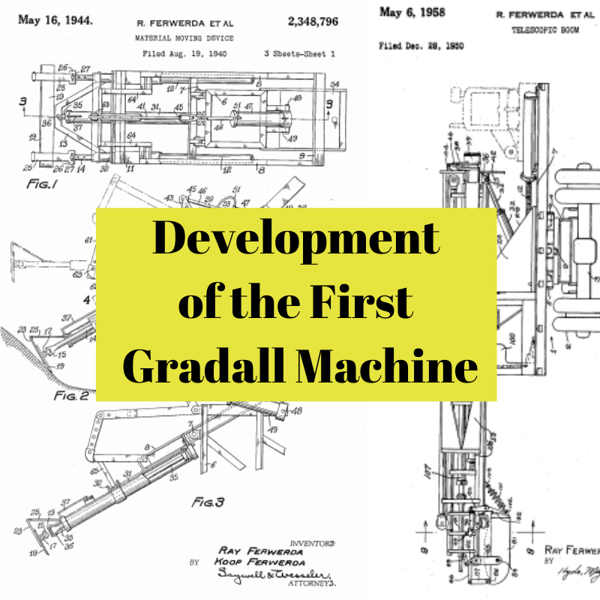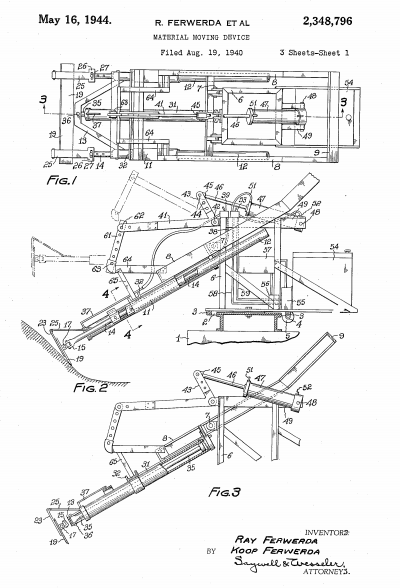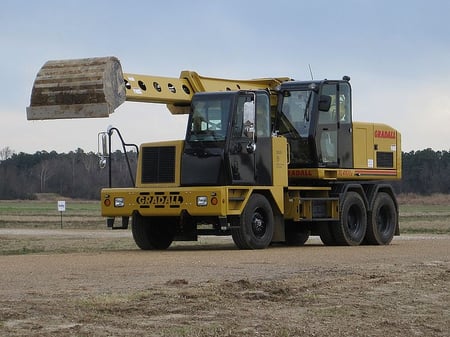How much do you know about the first Gradall machine?

Here are a few other Shop Talk blog posts you might find interesting:
The Ferwerda Brothers
The history of Gradall starts with the immigration of the Ferwerda brothers--Ray and Koop-- from Holland to the United States in 1920. Just five years after settling in Cleveland, Ohio, they were able to start their own construction company. Much of their work involved road work, and they faced the same challenge present the world over: how to efficiently get the job down! At that time, all that was available for finishing roadside embankments and preparing the roads were crews with shovels, rakes, and pikes.
Not Enough Manpower
By the 1930s, the problem had worsened. Factories were hiring men to manufacture armaments and materials to support the Allied war effort as WWII loomed closer and closer. This resulted in less manpower for road construction. In response, the Ferwerda brothers channeled their ingenuity and creativity into an effective solution: the first Gradall machine.

FWF Corp.
And they weren't the only construction company looking for a solution to the lack of manpower for grading. To meet the demand they knew would be present and finance the manufacture of the machines, they started looking for investors. In 1944, the brothers rented some garage space in Beechwood, Ohio to start manufacturing. Soon after they went into partnership with two other construction contractors: Ralph Werba and Donald Finlay. This marked the beginning of the FWF Corp. (Ferwerda, Werba and Finlay).
The First Gradall Machine
The first Gradall hydraulic excavator rolled out in 1944. It had a triangular, hydraulically powered telescopic boom that could both be raised and lowered as well as tilted left or right. The rugged bucket was mounted at the end of the telescopic with two powerful steel hinge-pins and, like the boom, was also hydraulically powered. The bucket had a hydraulic cylinder that allowed wrist-action for digging, loading, and grading a slope. The first machine, according to an article from Construction Equipment, was installed on a government-surplus truck.
By 1945, FWF had manufactured 5 of these machines. Soon, Gradall machines could be found on construction sites throughout northeast Ohio, and it was soon discovered that in addition to grading and material handling, it also worked for snow removal, trenching, and street maintenance.
Gradall Company

Thomas R Machnitzki (thomasmachnitzki.com), CC BY 3.0, via Wikimedia Commons
In 1945, Warner & Swasey of Cleveland, Ohio, acquired the rights to the Gradall patents to manufacture and market them more widely. This would lead to the birth of the Gradall company as we know it today, which manufactures both wheeled and tracked excavators in their trademark yellow and black colors. They also manufacture attachments for markets as diverse as mining, fire suppression, steel processing, and (of course) construction.
Conclusion
The impact of the Ferwerdas work in the construction equipment industry led to their induction into the AEM (American Equipment Manufacturers) Hall of Fame in 2020.


